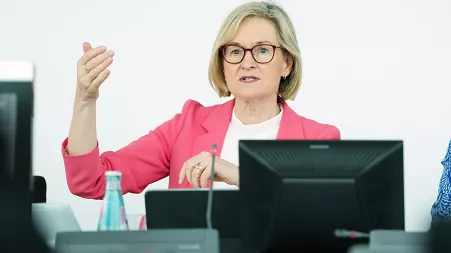“Where do you see yourself in five years?” is a standard job interview question for young people, but rarely asked of more senior workers.
But as we reach our 40s, 50s, 60s or 70s, it’s an important question to ask ourselves.
The answer might be “doing something quite different”.
In our current roles, we might find our energy levels depleted, enthusiasm starting to wane, or we might just want a new challenge.
When I stepped down as CEO of Newton Investment Management after 15 years I still loved the job and the company, but felt very “been there, done that”. I wanted a change, not a rest.
At 50, I was still ambitious, energetic and, hopefully, had plenty of years left for interesting, challenging and rewarding work.
Finding that – and getting the balance of roles and time commitments right – has taken longer than expected.
I’m now very aware that is quite normal (especially for anyone who tried making a career pivot during Covid) – but with the benefit of hindsight, I could have planned it better.
Given all the upheaval in today’s world, some proactive “what might I do next?” thinking is a good idea for anyone in their late-40s and beyond. Two of my friends around that age have just been “let go” by their respective firms unexpectedly, and are scrabbling for ideas.
At a recent reunion with contemporaries, it was clear that many face a long-lasting challenge when the rat race palls but retirement doesn’t yet beckon. When we last met, everyone had been working in relatively high-powered roles; most had since stepped down and were still contemplating their next move.
Now in their late50s or early-60s, they wanted to harness their energy, expertise and experience while avoiding the intensity of another executive position. Many recruitment companies would suggest non-executive director (NED) roles – which is what I do these days, alongside campaigning, volunteering and writing.
NEDs are part-time but the job can be full-on when something goes awry, or a company goes through a “corporate event” such as an acquisition or listing.
Directorships carry considerable legal and regulatory responsibilities and yet, as I have written about before, it can be hard to exert much real influence on the business as a non-executive.
One of the guys at the reunion had very firmly “ruled out” board roles, perceiving them to have more downside than upside. Having learned from experience, I am now confident I can make an impact on my current boards – and enjoy them. But none of that impressed my friend.
Still in his 50s, doing nothing was not an appealing prospect either. While he could financially afford to take some time out, he wanted to eventually re-apply his corporate experience; in his case, “senior adviser” roles (without the obligations of board directors) could be a possibility, but are out of reach for many.
For now, he is involved in “angel investing”; putting his own money into fledgling businesses and offering time, mentorship and business knowledge to founding entrepreneurs. But that is not for everyone.
The whole conundrum made me think about the relatively limited “obvious” options for those wanting to downshift but stay active and engaged.
As one of my 40-something friends pointed out, it’s been over 20 years since she last went job-hunting, which can feel overwhelming. (If you’re similarly out of practice, please read my advice on how to write an effective CV.)
Given the 3.6 million “economically inactive” people aged 50-64 in this country, along with Britain’s productivity problem, it’s a topic that should be receiving far more attention.
In the 2023 Budget the Chancellor announced a big “returnership” initiative to help over-50s back to work, but it was later explained that this was really only signposting older workers to existing programmes.
I have found a few interesting resources and would love to hear if you have used them or discovered others so we can compile a library of useful career services for older workers.
There is, as always, no single right path so the most important thing is to stay open to ideas; don’t rule out anything until you have really explored or even tried it.
BraveStart is a non-profit organisation “which helps people aged 45 to 70-plus feel excited about the next 10-plus years of their career”. It offers a community (membership costs £49) and a structured programme of workshops, along with networking events and ongoing support and guidance.
I took their quiz and was interested to see how my answers compared; it turns out that only 3.5pc fully disagree with the statement “I feel my prospects are limited by age discrimination”.
I also came across A&O Shearman’s “ReStart” programme for unemployed workers aged over 50, now in its eighth year. Over the first seven programmes, nearly 200 participants previously unemployed for up to a year have benefitted from workshops, coaching and mentoring. Of those who took part last year, 100pc said they would recommend the programme to someone else in a similar situation.
Information about 2025’s programme will be posted in December.
There are also several well-established returnship schemes in the private sector.
The Diversity Project, which I chair, works with Career Returners, which offers return-to-work advice to people of all ages and lists specific opportunities.
If none of this appeals, do not despair.
Side-hustles are all the rage – and can become your main event. Technology is your friend here; we no longer need office space to start a business.
Eleanor Mills, former editorial director at the Sunday Times, said when she was let go at 50 “it felt like I had died”. She decided to turn her experience into a business called Noon, to help mid-life women find and embrace their next chapter.
My husband (61) is writing on family, fitness and cooking on Substack, and loving it, and a friend who previously enjoyed a high-octane City career is now an expert gardener.
As each embarks on the next phase of life, they are learning new skills and creating new networks – and really enjoying themselves.
Disclaimer: The copyright of this article belongs to the original author. Reposting this article is solely for the purpose of information dissemination and does not constitute any investment advice. If there is any infringement, please contact us immediately. We will make corrections or deletions as necessary. Thank you.



